Customer service is one of the most essential marketing mix ingredients for products and services. High-quality customer service helps create customer loyalty. Customers are not only interested in the product they are being offered but also all the additional elements of service they receive, from the greeting they first receive to the refund or the way a complaint has been received and dealt with.
Why is good customer service essential?
Good customer service is essential in tourism because customers are more likely to recommend you to others if they feel valued. “Word-of-mouth” should never be underestimated. This is particularly important for tourist operators since many only get one opportunity to impress customers who frequently stay in a region briefly before moving on and may never return. When customers are happy with the service they receive, they are more likely to trust and be loyal to that company. Good customer service creates a positive customer experience, which can result in repeat business.
The customer service impact applies equally to a bad experience. A bad customer service experience of one customer can lead to the loss of many more potential customers through the power of word-of-mouth.
Customer service as a morale booster for staff
Staff or team members will be more motivated to work for a professional company that prides itself on excellent customer service. It will give that person a more profound sense of job satisfaction to know they have built relationships, created positive customer experiences, and contributed to the company’s success. Sir Richard Branson founded Virgin Atlantic, and job satisfaction is crucial in the perception of a trusted worldwide brand. Branson lives and breathes customer service, and it is rare to find a leader who elevates the experience for employees and customers to such a degree that other brands benchmark against his company.
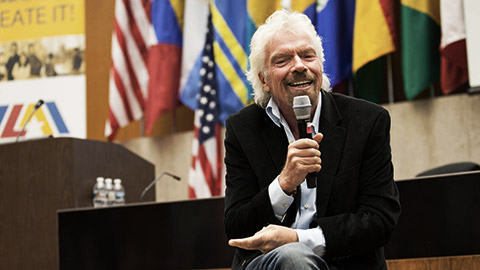
https://commons.wikimedia.org/wiki/Category:Richard_Branson#/media/File:YLAI_Panel_with_Sir_Richard_Branson_(30866487582).jpg
The presenter, in the following video, accompanied Branson on Virgin America’s first flight from Los Angeles to Las Vegas and spent time with him on the ground, as well as Virgin America CEO David Cush. The experience gave the presenter an up-close and personal view of how Branson interacts with employees and his leadership philosophy. As you will see every action Branson takes and every word he speaks—whether the cameras are on or off—reflects his commitment to creating an exceptional experience for his customers and employees.
According to Branson, there are seven (7) lessons that any leader can and should adopt if they hope to build a successful company.
Watch this video
Take some notes on the tips discussed to run a successful business. (6:15)
Main principles of good customer service
Good customer service can be demonstrated in various ways. Listening is one of the most important things. Without good listening skills, you will miss clues as to what is working and what is not. Listening to complaints is essential as it is by listening to them that the company can be made aware of a particular problem and make it right before customers desert them.
Customers generally value the following regarding good customer service practices.
- Courteous people
- People who value custom and listen to their customers
- People who offer help and have good product knowledge
- People who are enthusiastic about the product/service they sell
- People who take responsibility for complaints, rectify the problem quickly and efficiently and apologise for and acknowledge any mistakes they have made
- People who are not ‘pushy’ when making a sale.
Learning Activity
Good Customer Service
Research two online articles or videos (or one of each) that look at an aspect of customer service in the tourism industry context. Reference these sources and address the following two tasks:
- Write down the main points of each article.
- What do the articles/videos consider good customer service practices?
Write and share your responses with fellow online students in the Forum, Good Customer Service.
Excellent Customer Service
Watch this video
It is a clip from the 2015 film, The Intern with the Anne Hathway Customer Service Scene. (1:20)
It is no longer enough for businesses to provide quality goods and services at competitive prices. Customers also expect a high level of customer service. Creating loyal customers through good customer service can provide businesses with lucrative long-term relationships. Creating a better customer service experience than competitors can help businesses stand out in their marketplace and, in turn, make more sales.
Providing good customer service can create satisfied customers, who are more likely to recommend the business to others. Customers recommending a company through word of mouth or online reviews can improve the business's credibility. Good customer service will help increase customer confidence and, in turn, increase conversion. Creating positive customer experiences is vital in gaining customer trust and creating a strong public image. Good customer service will attract new customers and help keep existing customers.
Interactive Quiz
Complete the following and test your knowledge of customer service.
Poor Customer Service
Watch this video
It is a clip from Mr Bean and Customer Service. (1:33)
Poor customer service is when customers feel unmet expectations. This could include long wait times, an automated system that makes it hard to reach a human agent, and repeating information multiple times. People have expectations for how a company will serve them. When customers have a negative service experience, they often voice their complaints on social media. A business can’t afford to ignore these annoyances in today’s digitally connected world. Poor customer service experience can create a long-lasting negative memory of your brand for a guest or customer. This person will usually go on to share that experience with friends and family.
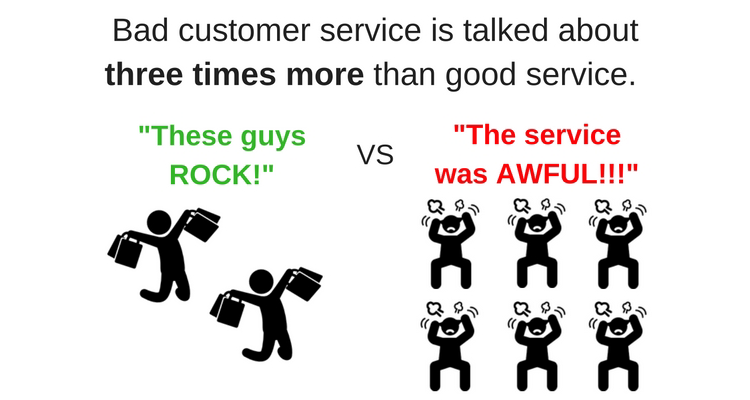
Learning Activity
Positive and Negative Impressions
Complete the following table with a list of customer service actions that would lead to positive and negative impressions of a company. (The first one has been filled in for you.) Complete four more in each column. A Word document is provided for you to complete this activity. Download it here.
| Actions that can give a POSITIVE IMPRESSION on the company | Actions that can give a NEGATIVE IMPRESSION on the company |
|---|---|
| Friendly attitude | Untidy appearance |
Upload your completed Word document and share your responses with fellow online students in the Forum, Positive and Negative Impressions.
Internal Customers
Your internal customers are your colleagues and/or the people you employ. The customer service extended to them should equal the service your external customers receive. Your internal customers, or team, will work much better if they are respected, praised, acknowledged, and thanked. This is an area where companies can let themselves down. The old saying ‘a little praise goes a long way’ is accurate. When a team member gives ‘better than expected’ service, it can often be due to their experience and how their company treats them.
Internal customers are more likely to extend exceptional customer service to external customers when supported internally. When all parts of a company are working well, it will generally be doing a good job and can grow. When one part of that company breaks down, the whole company may be seen as broken.
Why Does Good Customer Service Feel Good?
Research conducted by the American Express Company has examined the physical and emotional responses of people receiving good customer service. The results of the research project undertaken in the UK, Canada, Mexico, and Australia are summarised in the following article.
Explore
Service is Good for You.
New research shows that good customer service gives us almost as much buzz as being reunited with an old friend or watching a favourite sports team head to victory. Far from providing a slight lift during a mundane day, tests on 1,620 volunteers show that excellent customer service acts as a much stronger emotional switch.
The research, undertaken by Neurosense on behalf of American Express, showed that two in three volunteers saw their pulse rate increase, their breathing slow, and their sweat glands swing into action when shown images of workers going the extra mile for customers. These are the same physical responses we feel when thinking of something pleasurable – such as a good match with an old friend or your favourite football team winning a championship.
Dr Jack Lewis, a neuroscientist who looked at the research, said he was amazed at good service’s impact on people. “It was a big surprise to see that the volunteers had a response like what we call a 'peak pleasure'. This means they were having a powerful emotional reaction. This might have been because we Brits tend to expect mediocre service. As such, we are so surprised when someone provides excellent service that it causes a bigger response in the brain, like what we see when people feel loved.” Dr Lewis says the physical reaction is partly caused by neural electrical stimulation in the brain and partly by a hormonal response involving adrenaline.
“The research found that volunteers had a big response to seeing a cab driver return an item to a customer who had left it in the back of their cab,” he added. The results showed that this was an emotional event for respondents as it showed humanity. They also responded positively to things like getting a gift as a customer and solving a problem quickly over the phone.”
[Source: The Telegraph – 20 December 2020]
Key takeouts from the above article:
- Good customer service triggers us as much of an emotional switch as watching our team win, based on results from 1,620 volunteers
- American Express commissioned research that showed two-thirds of volunteers demonstrate the same physical responses to extra service levels as they would when thinking of something pleasurable
- So powerful was the reaction Dr Lewis compared it to the ‘peak pleasure’ response we feel when feeling loved. He attributed this surprise to the low customer service expectations of Brits. According to Dr. Lewis, this reaction is caused by neural and hormonal responses
- The research demonstrated that emotional events induced extensive responses, such as returning a lost item or offering a gift. Those who experience such positive events may, in turn, adopt the behaviour of others. This is called ‘Pro-social behaviour’.
Reflection
Read the following TripAdvisor reviews of a restaurant in Canterbury.
Analyse the complaints – what do you think is the main problem here? If you were the owner of this restaurant, how would you respond to these reviews?
https://www.tripadvisor.co.nz/ShowUserReviews-g658478-d3863223- r156641162- The_Village_Inn-Geraldine_Canterbury_Region_South_Island.html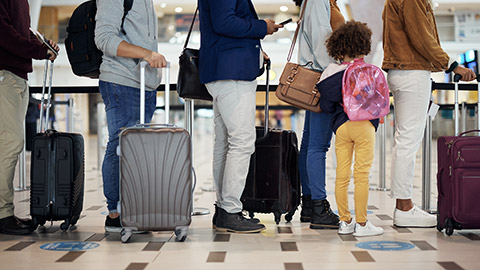
In general terms, we now know what customer service means, but how can we apply it if we don’t know who our customers are, what motivates them and what makes them our customers? All tourism or travel workplaces aim to be successful, and each enterprise may have differing goals to reach to be successful.
To reach these goals, the industry is constantly faced with the issue of finding new customers. Finding new customers costs money by way of advertising, displays and pricing. This can hurt notably smaller workplaces that may be new or working with a limited budget. The focus should be on the 20% of existing clients who are our best customers.
Let’s look at our five main customer types:
- Needs-based customers
- Impulse customers
- Discount customers
- Loyal customers
- Wandering customers.
Needs-based Customers
A specific need drives these people. They look for instant results and, if not, leave or go elsewhere. They buy for particular reasons such as honeymoon, anniversary, or birthday. They often have an absolute price point. As tricky as these customers can be, they can also become loyal if taken care of. It is important to initiate positive personal interaction with this customer segment to retain them. This group can become your most significant source of long-term growth.
A critical factor with this customer is that they can easily be lost to Internet sales or a different retailer. Overcome this threat with positive interaction and use a very experienced salesperson. If the level of service received is superior, they will often leave the Internet behind and not go to another retailer. The long-term potential here can surpass the impulse buyers.
Consider an example of where you have recently been a needs-based customer.
Impulse Customers
Impulse customers are a large section of ‘yet to be’ clients you want to serve. Assisting an impulse customer boosts income and can increase your database. By taking this opportunity to give good customer service, you also open the way for the impulse customer to recommend your service and become a loyal customer. This is the largest group responding to advertising and displays with tempting offers. Impulse customers make buying decisions in a snap. They are highly emotional buyers who typically don’t spend much time researching their purchase—so they don’t need to be “sold” with a compelling value proposition. When the mood strikes, the best thing you can do for an impulse customer is get out of their way.
Impulse customers are the best customers to upsell to and are the second most attractive segment (after loyal customers) to focus on. Impulse customers do not have a specific product in mind and purchase products spontaneously. In addition, impulse customers are typically receptive to recommendations on products. Impulse customers are second to loyal customers in generating sales revenue. Keeping these customers in the loop on new product offerings dramatically improves a company’s profitability.
Consider an example of where you have recently been an impulse customer.
Discount Customers
Discount customers will help your business turnover, which is the key contributor to cash flow. This same group, however, can often wind up costing you money because they are more inclined to complain or not be entirely happy with the product and want refunds or remedies for their complaint. Discount customers are resilient to upselling, are usually the least loyal segment of customers, and generally move on when better markdowns are available elsewhere. It’s hard to cultivate loyalty among bargain hunters, as they’re likely to drop your product or service once the discounted pricing expires.
Consider an example of where you have recently been a discount-based customer.
Loyal Customers
Loyal customers make up the bedrock of any business. As the name implies, loyal customers have committed to your product or service. Even though they may comprise the smallest percentage of your overall consumer base, your loyal customers are also the most likely to generate most of your income. Loyal customers must be communicated with regularly by telephone, mail, email, etc. These people are the ones who can and should influence buying or planning decisions. Nothing will make a loyal customer feel better than you soliciting their input and showing how much you value them. As a rule, the more you do for them, the more they will recommend you to others.
Consider an example of where you have recently been a loyal-based customer.
Wandering Customers
Wandering customers are somewhat related to impulse shoppers but are much less likely to make purchases. Noted as the largest segment in terms of traffic, wandering customers make up the smallest percentage of sales. Many shop for interaction and experience, so it is important to minimise time spent but ensure they are not ignored. You should always remember: that this person may surprise you and become a customer. Never assume you can pinpoint a time waster.
Consider an example of where you have recently been a wandering-based customer.
Test your knowledge of five main customer types.
Watch these videos
They are on a variety of brands
Nothing Beats Queensland-Advert 2. (0:15)
Rexona Men - All Blacks. (1:00)
Jetstar New Zealand Domestic Launch! (0:47)
New Zealand v Aussie kids -Mitre 10 hardware shop TV advert. (0:45)
Funny Prank Lift Plus (Sharpen Up!) NZ ad "Spoons". (1:02)

According to Collier (2011), good customer service is critical to a quality product. To meet the tourism marketing ideal of “meeting and exceeding customer expectations”, Collier states that service needs to be consistent, continuous, thoughtful, and available. Staff providing service need to have appropriate skills, knowledge, and attributes to do their jobs well. He goes on to identify listening skills, punctuality, courtesy, integrity and grooming as specific skills and qualities needed to provide a consistently high level of quality customer service.
Important
The skills and qualities outlined by Collier are reflected in the five key components of customer service provided by the SERVQUAL service measuring system. (Parasuraman, Zeithaml & Berry 1988).
The Service Quality Model or SERVQUAL Model of Service Quality was developed and implemented by the American marketing gurus Valarie Zeithaml, A. Parasuraman and Leonard Berry in 1988. It is a method to capture and measure the service quality experienced by customers.
Initially, the emphasis was on developing quality systems in product quality. Over time, improving the quality of related services became more and more essential. Improved service quality could give organisations a competitive edge. In addition, service, in general, became more critical, and as a result, the SERVQUAL Model had a severe impact in the eighties. Back then, measuring service was abstract and not easily quantifiable.
The SERVQUAL Model of Service Quality is primarily a qualitative analysis. If a satisfaction survey mainly depends on the transactions between supplier and buyer, the observed quality is measured through generic environmental factors.
Reading
Read more about SERVQUAL at the following link:
https://www.toolshero.com/quality-management/servqual-model/
The five key components are:
- Tangibility
- Reliability
- Responsiveness
- Assurance
- Empathy.
Turn each of the dialogue cards to read more about the five (5) key components.
Click on the following headings to explore the five (5) areas New Zealand tourism providers must consider.
Tangibles are the physical evidence of the service and include:
- Physical facilities
- Appearance of personnel
- Tools and equipment
- Communication materials.
From a New Zealand tourism perspective, a customer should expect the service provider to have clean, attractive and easy to find facilities. The staff should be well groomed and wear clean, tidy, and complete uniforms where appropriate. The tools and equipment used to provide the service must be well-maintained and safe. Printed and visual material must be easy to access and understand.
Reliability is the ability to perform the service dependably and accurately.
Users of New Zealand tourism products and services should expect that the service they wish to use will be available when they want to use it. This includes on-time operation of scheduled services and opening hours, e.g., seven days a week, including public holidays. Tourists’ expectations of what they purchase should be met or exceeded. Bookings should be error-free. The level of service experienced should be the same at all times of the day, every day, and delivered by all staff members.
Responsiveness is the willingness to help customers and provide prompt service.
New Zealand tourism providers should be equipped to handle customer queries promptly and efficiently. A positive “can do” attitude will likely surprise and delight the customers and make them feel valued. Staff should be willing to respond to customer needs.
Assurance is employees' knowledge, courtesy, and ability to convey trust and confidence.
Staff employed by New Zealand tourism service providers need to have great product knowledge, be well-trained in company policies and procedures and deliver the service in a way that reflects well on the company they work for and New Zealand in general. Their communication skills should be well suited to their service, and they should demonstrate listening skills that make the customer confident that their needs will be met.
Empathy is the caring, individualised attention the company provides its customers.
Providers of services in the New Zealand tourism industry should understand and respect the needs and expectations of customers. When something prevents the expected level of service from being delivered, providers need to acknowledge disappointment and take suitable steps to replace or reimburse for the loss experienced. They need systems and procedures for dealing with complaints that make the customer feel that they have been listened to and that their concerns have been dealt with fairly and openly.
Scenario
We booked 3 adult trips on ABC Jetboats over the phone and drove to Taupo to enjoy (2 days later). The signage, car park and shop front were all bright and clear. The staff were easily identifiable friendly, and uniformed. Upon checking in, we found a short queue awaiting us. We were given 3 tickets and told to walk to the docking area. No further information was given. ABC Jetboats was running on time to the second. We felt rushed even though we had arrived on schedule, having not been instructed to arrive 15 minutes earlier. When previously called and the original booking was made, there was not a lot of information given regarding the level of ‘thrill’ or suitability for various customers and age ranges. Unfortunately, my father became quite ill during the trip, and despite my concern, no action was taken, which was frustrating. All ticketing and services were accurate and seemed replicated throughout each experience for other customers.
Let’s identify parts of the story that relate to each heading:
Tangible – signage, car park and shop front were bright and clear. The staff were easily identifiable friendly, and uniformed.
Reliability – when previously called and the original booking was made, there was not a lot of information given regarding the level of ‘thrill’ or suitability for various customers and age ranges.
Responsiveness – no assistance was given to my unwell father regarding access to shade, water, rest space, etc.
Assurance – we were given three (3) tickets and told to walk down to the docking area. No further information was given.
Empathy – The driver’s response to my requests was lacklustre, hard to hear and somewhat embarrassing.
Learning Activity
ABC Jetboats
Read through the scenario and identify parts of the story related to each heading.
"The dock was a concise trip from the falls and seemingly not too much of an inconvenience or off the scheduled route. Incidentally, the initial journey up the river passed natural geothermal steam vents and pipes, which emitted a foul odour. I do not experience sea sickness myself, and when hit with this odour, I needed some time to compose myself as the journey went on, although the 360 turns began immediately! I had a blast but felt awful for my father. No refund or recourse was offered, not that we expected it".
Tangible
Reliability
Responsiveness
Assurance
Empathy
Post your responses to this activity in the Forum, ABC Jetboats.
The Five Gaps of the SERVQUAL Model of Service Quality
Both the communication between the customer and the service-providing organisation, as well as the organisation’s internal communication, are of vital importance for the quality of the service. It is good when organisations know the expectancy pattern of their customers.
Therefore, the SERVQUAL Model of Service Quality identifies five gaps that can arise between the customer’s needs and the service that a company offers.
- Knowledge gap
- A gap arises when an organisation’s knowledge of customer expectations is lacking, preventing them from approaching consumers correctly
- Standards gap
- The organisation has already understood what customers expect from their service. If this idea is wrong from the start and does not correspond to what customers expect, there is a significant risk that the organisation will mistranslate it into a quality policy and corresponding rules
- Delivery gap
- A gap can also occur when the organisation offers a service different from what the consumer had expected. This also involves an incorrect implementation. For instance, in the way employees carry out policy
- Communication gap
- Sometimes, the external (marketing) communication the organisation sends out can create the wrong customer expectations. It also happens that the organisation communicates and promises things not in line with what they can deliver
- Satisfaction gap.
- Dissatisfaction results from a (significant) difference between the service a customer expects and the service they experience. Eventually, this will lead to the most significant gap in the quality of experience.
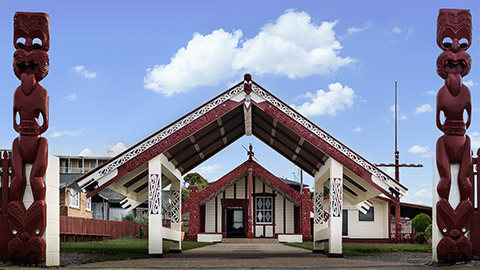
What does the word ‘hospitality’ mean? Think more significant than a bar or restaurant!
- For example, when did you last visit friends or family?
- How hospitable were they towards you?
- How did they show this?
- What did they do?
- How did it make you feel?
- Were you warmly welcomed?
- Respected?
- Cared for?
Manaakitanga [pronounced ma-na-kee-tung-a] roughly translates to hospitality; think of being welcomed into a space you visit. You would be welcomed, cared for, and respected. Behaviour values are demonstrated by acknowledging other people through the following:
- Aroha – love/compassion
- Kindness
- Generosity
- Respect
Look at the Māori dictionary definition of Manaakitanga below.
(noun) hospitality, kindness, generosity, support - the process of showing respect, generosity and care for others. Kore rawa rātou e wareware ki ēnei manaakitanga ā mate noa rātou (TTT 1/8/1924:85). / They will never ever forget this hospitality until they die.
Manaakitanga: Giving New Zealand Visitors an Experience of True Hospitality
In New Zealand, hospitality is not just industry jargon; it is at the heart of the nation’s indigenous culture. Manaakitanga is a Maori word that loosely translates to ‘hospitality’ – it is central to Maori society and inspires the way that travellers are made to feel welcome when visiting New Zealand.
In Maori culture, manaakitanga is a traditional value considered hugely important. The art of hosting visitors, being generous and caring about the treatment of others translates naturally to tourism and ensures that international visitors feel welcome in New Zealand, no matter who they are or where they are from. As with many Maori words, manaakitanga is a term that contains many layers of meaning. At its heart, the term refers to the need for reciprocal hospitality and respect between different people, groups and cultures.
In Maori culture, the provision of food and rest for visitors is considered extremely important – a visit to a marae will confirm this fact. Whether the event is large or small, the focus of the hosts is to make visitors feel comfortable and welcome. Traditionally, this may have included treating guests to local seasonal delicacies such as paua, kina (sea urchin), eel, karaka berries, fernroot, kumara (sweet potato) or Titi (Muttonbird). In the early years of European settlement, local Maori would often gift food to settler families and sometimes settlers even moved into the marae and became part of the whanau (family).
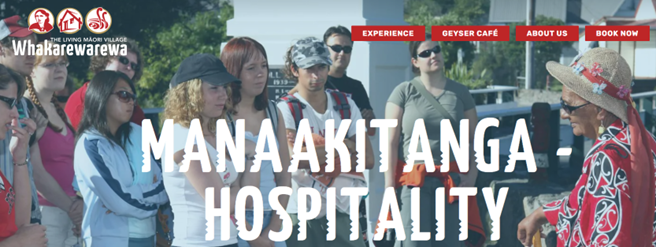
The Living Māori Village – Whakarewarewa explains how they demonstrate and provide Manaakitanga to visitors.
About our People and Land: Our Hospitality
Here at Whakarewarewa – The Living Māori Village, we open our home to visitors from all corners of the world, and we have displayed this hospitality for hundreds of years. We take great pride and privilege in our hosting responsibilities, mainly as we were the first Maori tourism business in New Zealand. Today, as we continue the legacy of our ancestors, we believe that it is the spirit of manaakitanga that makes a visit to our home, Whakarewarewa – The Living Māori Village, so uniquely special.
When you visit us, you are visiting both a home and an organisation that is owned by the tangata whenua – the people of the place. Accordingly, for us, manaakitanga means we care for our customers as our own whanau. You’ll find our team welcoming, kind and accommodating. Ultimately, we want our visitors to depart with an experience that’s like any other, one filled with memories of intrigue, joy, and wonder.
We invite you to come to Whakarewarewa – The Living Māori Village and experience manaakitanga – our legendary hospitality.
Explore
Explore the website here. https://whakarewarewa.com/
/div>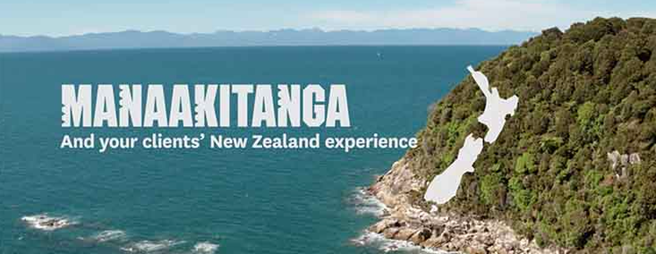
Watch these video clips
Expand your knowledge of Manaakitanga and tourism, which go hand in hand. They invite visitors to experience the attraction, being welcomed and treated equally while understanding the significance of the people, land, and culture.
The first video explains Manaakitanga and its link to the tourism sector and is hosted by NZ Māori Tourism Pou Ārahi Whitiaua Black.
The second video is from Tourism New Zealand and discovers Manaakitanga.
